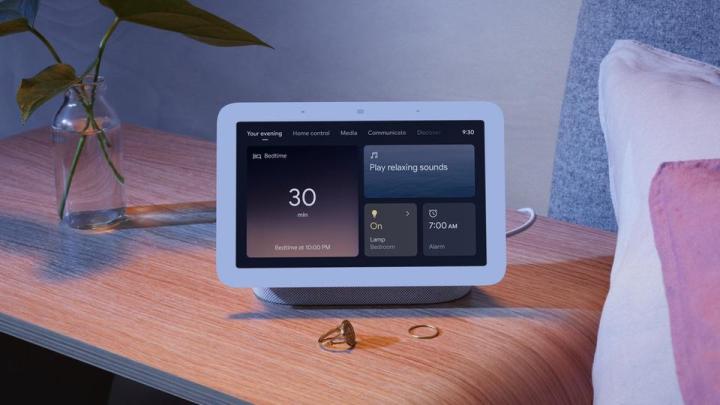Google is a company that gets a lot of things right. Its search engine is the most popular in the world, its lineup of smartphones is thriving, and its smart home products are among the most versatile on the market. But when it comes to designing plugs and power adapters for those smart home devices… well, it’s time to go back to the drawing board.
The Google Nest Hub family boasts two of the most popular smart displays on the planet. Both the Nest Hub and Nest Hub Max make it easy to connect with family, check your calendar, or get quick updates on your daily news. By all standard metrics, they’re a runaway success — and they’ve got the sales to back up those claims. The same goes for plenty of other products in the Nest family, which continue to dominate the marketplace.

As functional and versatile as they are, however, there’s one giant spot for improvement in the Google Nest lineup — their bulky, space-consuming plug is overdue for a replacement.
Scour any forum dedicated to Google’s smart home products and you’ll see the same complaint. Whenever you plug in a Google Nest product, its chunky adapter blocks access to USB ports located on newer electrical outlets. That means plugging in a single smart gadget from Google can occupy up to three outlets. Talk about a waste of space.
It’s an odd design choice on the part of Google, and considering everything else about its smart home catalog is top of the line, it makes the inconvenience even more noticeable. It’s especially noticeable on the Nest Hub Max, which clocks in at a staggering $230, as you’d expect a bit more nuance from such a premium product. Forget about charging your Pixel next to your Nest product — Google’s made sure that a single Nest takes up 75% of your electrical outlet.

Fixing the Google Nest’s plug design
Despite the constant frustration from users, the rounded plug has stuck around for several years, and there’s no indication it’ll go away anytime soon. It’s a bit baffling, as Google already manufactures a charger for the Pixel that slots easily into electrical outlets without obscuring other ports, not to mention the thousands of other products on the market that consumers use daily without issue.
The easy solution would be for Google to make the plug into a standard design, then offer a power brick somewhere down the line on the cable. That would free up the USB ports on wall outlets, but users would then have to deal with an unsightly power brick on their kitchen counter or home office. The other option would be to simply let the unit be powered by a USB-C cable, negating the need for a bulky plug altogether.
For the immediate future, it seems that we’ll be stuck with the current plug configuration. However, the world is full of inventive minds, and Google Nest Hub users have taken it upon themselves to craft an easy workaround for the problem. The most popular fix is to simply use a short extension cord. It’s not the most elegant option, but gets the job done in a pinch.
If you’re really adventurous, you could also search around for replacement wall outlets — swapping out your current faceplate for one that moves its USB ports farther away from the electrical socket. It’s not ideal, but until Google comes up with something better, we’ll be left to fend for ourselves.

Compared to other smart assistants, it makes no sense
What’s even more bizarre is Google seems to be the only company churning out smart home products with this issue. Peruse anything in the Apple or Amazon catalog, and you’ll likely find well-designed plugs that work as intended without blocking any unused outlets (and little to no fan outrage about their performance.) There are exceptions, of course — the Echo Show 15 has a large, bulky power brick, but the Echo Dot uses a smaller design that only utilizes a single outlet.
The HomePod mini is a great example of intelligent design, as it’s powered by a simple USB-C cable and comes with an adapter that can also be used to charge your iPhone. It also means the HomePod mini can be plugged into just about anything that supports a USB-C connection, letting you take it on road trips or hook it up to your computer.
Google, meanwhile, is dead set on limiting your charging abilities. Maybe it’s all just a big conspiracy to get folks to invest in smart power strips — after all, they’re great for the environment, and Google has shown time and again that they’re committed to helping the planet.
Or… maybe it’s just a bad design. Either way, here’s hoping we get a fix in the near future. The fix ultimately lies in moving power bricks farther down the cable, or integrating them into the internals of the device.



